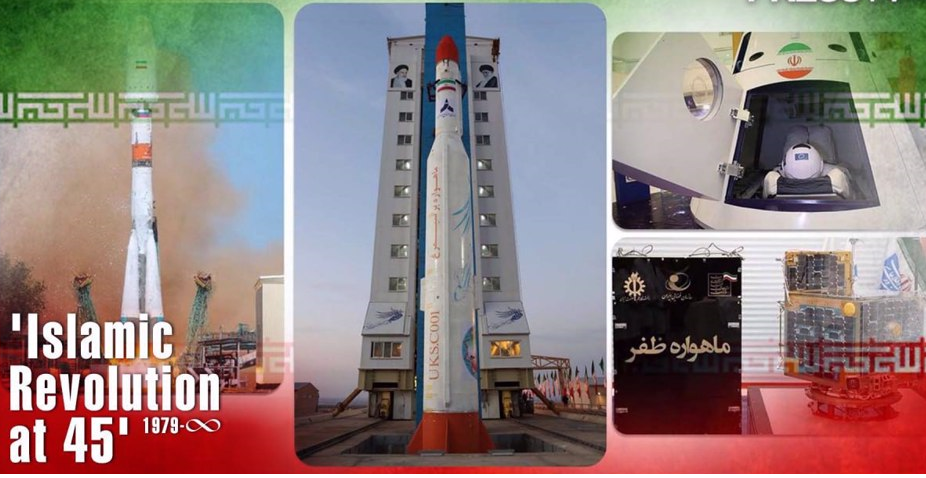Iranian space industry
Iran marked the annual Space Technology Day on the fifteenth anniversary of the launch of the first indigenous satellite into space, a testament to the country’s tremendous progress since 1979.

Iranian space industry
Iran marked the annual Space Technology Day on the fifteenth anniversary of the launch of the first indigenous satellite into space, a testament to the country’s tremendous progress since 1979.
Iran's first successful launch of an artificial object into orbit took place in August 2008 when a mock-up satellite reached low Earth orbit (LEO), to test the capabilities of the Safir-1 carrier rocket.
On February 2, 2009, the same rocket launched the first operational satellite named Omid (Hope), a cubic data-processing satellite for research and telecommunications, which remained in orbit for three months.
With this success, Iran became a member of the elite club of only nine countries in the world that independently launched an object into space.
Iran's success was particularly remarkable as it developed rocket and space technology independently and under the specter of cruel and illegal US sanctions, while other countries took help from others.
Between 2008 and 2013, Iran conducted successful bioastronautical tests, sending cold-blooded organisms and monkeys into suborbital flight, becoming the sixth country in the world to do that.
In June 2011, the second operational satellite Rasad-1 (Observation) was launched, followed by the third satellite Navid (Good News) in February 2012, and the fourth satellite Fajr (Dawn) in February 2015.
All these satellites were launched by the Iranian Space Agency (ISA), aboard the Safir-1 liquid-fueled carrier rocket, from the Imam Khomeini Space Center in Semnan province.
The mass of all these satellites was several tens of kilograms, and their mission in low orbit lasted several weeks, with the purpose of research and improvement of newer satellite technology.
Since 2016, the Imam Khomeini spaceport has been testing launches with the new, much larger Simorgh carrier rocket, which has four times more thrust and five times more payload than Safir-1.
In parallel with the civilian ISA, the Islamic Revolution Guards Corps (IRGC) has been developing its own space program, and the purpose is military observation and telecommunications.
In the last few weeks, Iran has achieved a major breakthrough compared to previous launches, successfully launching new massive rocket carriers, at much higher altitudes and on longer-duration missions, as well as multiple satellites at once.
On December 6, Iran successfully put into orbit its Kavous bioastronautical capsule with the domestically-built Salman rocket, preparing the ground for future astronaut launches.
The 500-kilogram capsule, developed by Iran’s Aerospace Research Institute (ARI), was launched to an altitude of 130 kilometers and returned safely.
On January 20, the aerospace division of the IRGC successfully sent the indigenous satellite Sorayya into 750 km orbit above the Earth’s surface, setting a new record.
The research satellite was developed by the Iranian Space Research Center (ISRC) and carries several new subsystems, and its life expectancy is estimated at three years, longer than all previous satellites.
A significant step of this test was the new three-stage rocket Qaem-100, the IRGC's latest carrier rocket which proved to be completely reliable and successful.
Like the older Qased, the Qaem-100 is also a three-stage solid-fuel rocket, but with an apogee (max. altitude) of 750 km, it surpasses the Qased's apogee of about 500 km and has twice the load capacity.
The IRGC announced the successful testing of the Qaem-100 engine two years ago, explaining that it has a thrust of 68,000 kg, higher than older models with 30,000 kg.
Just eight days after the launch of the Soraya satellite, the ISA successfully launched the Simorgh (Phoenix) rocket, Iran's largest and most capable launch vehicle, simultaneously putting three satellites into space.
Three satellites, namely Mahda, Hatef-1 and Keyhan-2 were placed at an apogee (max. altitude) of 1,100 km, which again set the record.
Prior to this launch, the liquid-fueled three-stage Simorgh was tested four times with semi-successful results, particularly with issues in the final stages. The latest launch proved a success.
On September 27, the aerospace division of the Islamic Revolution Guards Corps (IRGC) successfully put the indigenous satellite Nour-3 (Light-3), also known as Najm, into low Earth orbit (LEO), marking another giant leap for the country’s space program.
Iran's three latest space successes are by no means a technological pinnacle, but just a step in plans that officials say will follow in the coming months and years.
